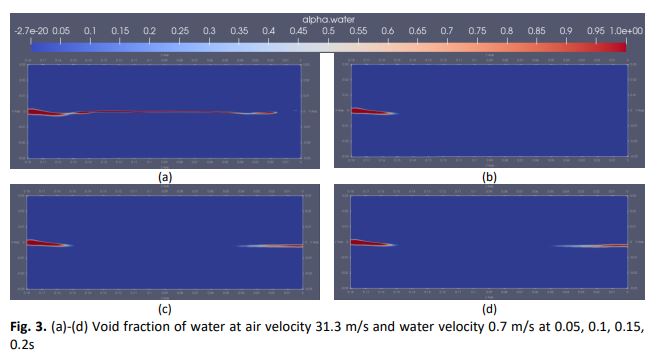Modelling and Validating the Spray Characteristics of a Co-axial Twin-Fluid Atomizer Using OpenFOAM
DOI:
https://doi.org/10.37934/arfmts.91.1.3545Keywords:
OpenFOAM, spray characteristics, Eulerian method, VOFAbstract
Today, the applications of sprays cover a wide range of fields. Their role in internal combustion engines is instrumental in maintaining higher engine efficiency. A deeper understanding of the liquid-gas phase interaction in sprays is crucial to the atomization process. The methods and models used in the simulations have their challenges due to the various discretization schemes and solutions used. To develop and validate the computational models, well defined experimental data is required. In the present work, spray characteristics were studied numerically through OpenFOAM. As the spray characteristics are closely linked with the liquid breakup length, this study focuses on the primary breakup phenomena and the breakup length of the liquid jet emanating from the twin-fluid co-axial flow atomizer. Numerical simulations were performed for a wide range of initial conditions and the breakup length of the spray was validated against the experimental observed by Sivadas et al., [26]. These simulations were carried out using a Eulerian based VOF solver that models the fluid as a continuum. K-Epsilon model was used to predict the turbulent nature of the spray. The air and water velocities were varied between 19.0 to 31.3 m/s and 0.7 to 1.8 m/s respectively. The proposed model was able to predict the computed breakup length within 20% of the experimental values. The present model can be further extended to test for a co-axial swirl injector to predict finer spray formation.
Downloads

































